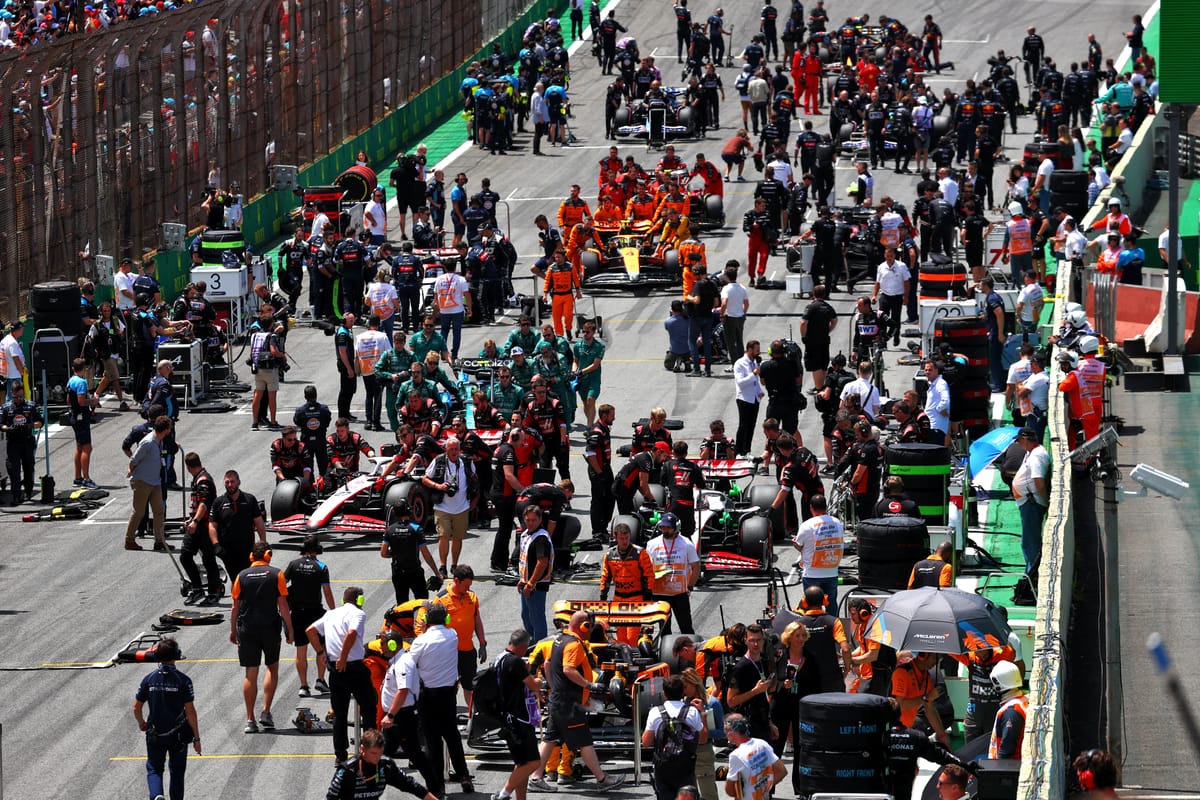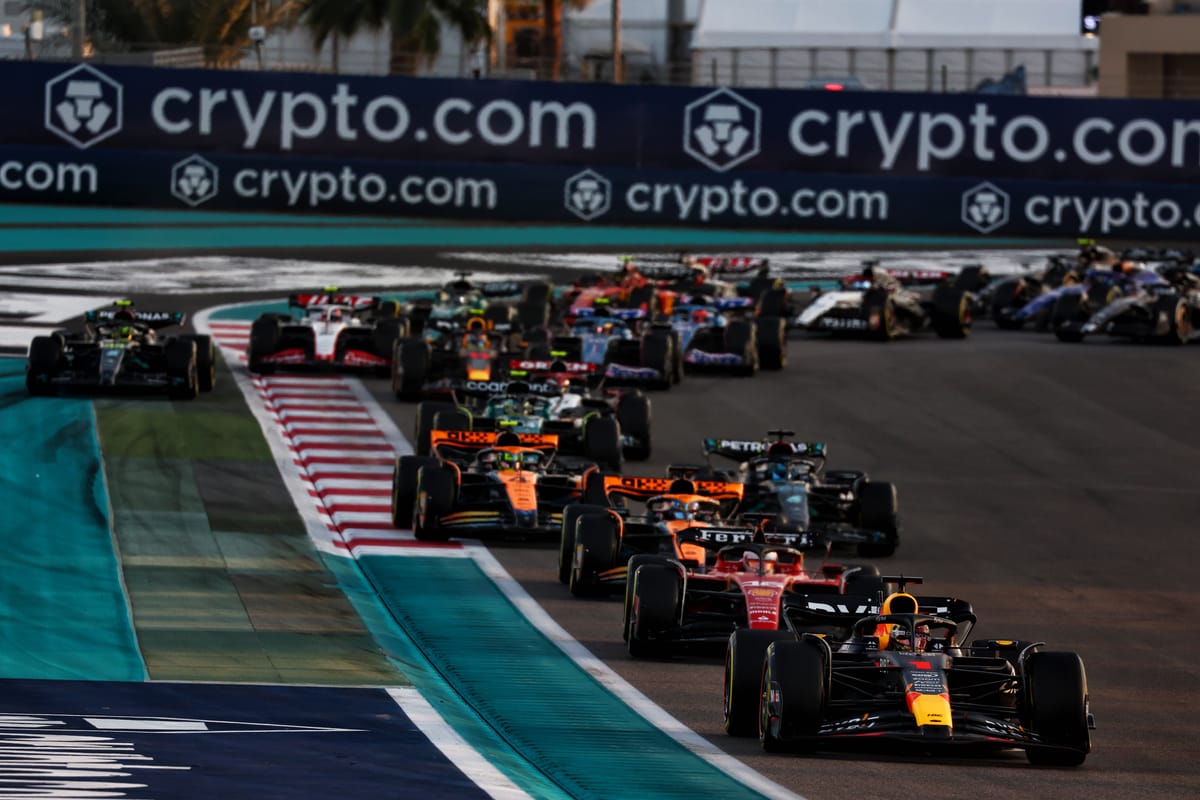Up Next

Formula 1’s dirty air phenomenon got worse than expected in 2023 because of loopholes that were not closed quickly enough, and this is unlikely to be improved again before 2026.
When F1 and the FIA were working on the new ground-effect aero rules for 2022, a key focus was on the downforce a car lost when running in the wake of another.
The previous generation of cars lost close to 50% of downforce when one car length behind another and when the new rules came in the expectation was that the cars would lose just 15% at the same distance.
Though these were only ever estimates, the suggestion was F1 got pretty close in 2022, to around 20% of downforce lost at one car length behind.
As teams developed, they were always going to find ways to produce downforce that meddled with the cleaner wake the regulations aimed to achieve, but the problem got worse than was feared in 2023.
Earlier this year it was revealed that the cars are now losing 35% of their downforce and that this is partly because the regulations allowed for certain things to be exploited that the FIA had not accounted for.
Nikolas Tombazis, director of the FIA’s single-seater department, told select media including The Race: “The wake has definitely got a bit worse this year.

“We knew that it would deteriorate a bit when people develop it a bit more.
“There were a few particular areas of the car where some loopholes we didn't manage to close soon enough worsened.
“For example, the front wing endplate area was one of them. Some of the wheel furniture area, the brake ducts, on the inside of the front wheels.
"These areas made the wake a bit worse. We've learned a bit how to do it next time around.”
NO ACTION BEFORE 2026

While these lessons will be incorporated into the 2026 car rules, theoretically, the FIA could take swift action to rectify some issues sooner.
It can outlaw designs that go against the objective of the rules, which is enshrined in the technical regulations as “to enable cars to race closely by ensuring the aerodynamic performance loss of a car following another car is kept to a minimum”.
That means that while a design can be perfectly legal, the rules and governance in place mean the FIA can throw it out.
This ability has already been used to take designs that are legal under the rules and outlaw them for the following season, such as some Aston Martin rear wing endplate geometry last year and a Mercedes front wing endplate design.
But it had also been suggested earlier this year that the FIA could make regulatory changes for 2025 to simply reinforce the existing rules rather than target a specific design.
This could have been similar to the rule tweaks made in 2019, the most obvious of which were to the front wings, which were simplified to chip away at the outwash.
This helped manage the problem for the final years of that regulation cycle before the major rules overhaul came in for 2022.
But now it seems the FIA does not view any action as necessary.
That is likely to be because the changes needed to improve the situation are almost certainly too big to be worth pushing through for one season.
Tombazis also reckoned there has not been a deterioration though the current season, only an observable difference at the start of 2023, and said “I don’t think it’s going to get much worse for next year”.

If so, that’s a key difference to the 2019 changes mentioned previously, when a problem needed containing.
While inaction could come back to bite the rulemakers, they could always react in 2024 for 2025 if something egregious emerges that severely compromises the cars’ ability to follow and harms racing further.
THE OTHER KEY FACTOR

There’s another factor to consider that means minor aero tweaks alone will not be enough to address the key problems.
Several drivers have complained more about thermal degradation from the tyres this season.
“It's a combination,” said Tombazis. “The fact that the wake worsened a bit also goes together with degradation.”
A worse wake costs downforce and makes the following car slide around, which the tyres struggle to handle. At the same time, a worse wake means less cool air for the car behind to pass through, which will be cooling the tyres a little less, Tombazis said.

Any aero changes to improve the quality of racing therefore need to be supported by better quality tyres.
Now it has been decided to kill the planned tyre blanket ban for 2025, Pirelli has more scope to focus its development work on better thermal degradation.
That might mean a decent, important step for 2025 already, which would then be twinned with bigger aero changes and lighter cars for 2026.
“One of the key objectives during testing in 2024, especially now that we've clarified that there's no chance of taking off the blankets for 2025, will be to improve the thermal degradation characteristics,” said Tombazis.
“Most of this comes from the fact that cars nowadays basically put into the tyres the highest energies that we've ever seen.
“And that's one of the reasons that for 2026 we're considering lower downforce cars and also to save weight.
“We believe that will also make it much more possible to have tyres that are a lot less prone to have this phenomenon in 2026.”
All of that probably makes it easier for the FIA to stomach not doing anything right now.
Teams will keep developing their cars, though, and that will result in adding more downforce.
Exactly how they will do that and whether it makes the cars’ wake characteristics even worse is something the FIA will only find out in time.
But it would not be a surprise if following continued to get worse next year and in 2025.






